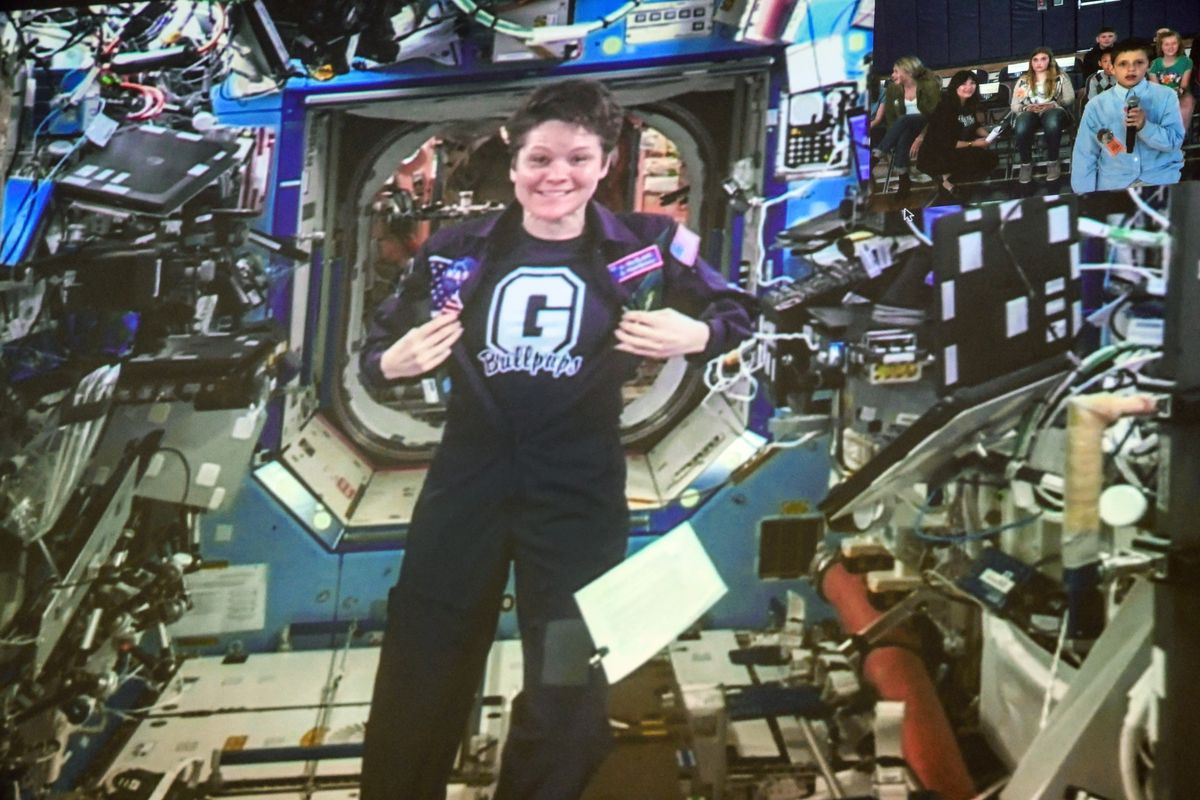Washington’s Anne McClain, Kayla Barron could be announced by NASA as moon-bound on Monday

NASA’s announcement Monday of four astronauts who will be the first to travel to the moon in five decades could be a big day for two Washington women.
Anne McClain, of Spokane, and Kayla Barron, of Richland, are among the 18 astronauts on the Artemis team who could be moon-bound. The four astronauts will be the first humans to travel to the moon since the Apollo 17 mission in 1972, more than five decades ago.
NASA is expected to name the crew members at 8 a.m. Pacific during an event in Houston.
The mission, dubbed Artemis II, is the first crewed mission aboard NASA’s Orion spacecraft, and will be the first launched from the Space Launch System rocket. The four astronauts on the Artemis II mission will confirm the spacecraft’s systems function properly in deep space in an effort to establish future Artemis missions and ultimately establish a “long-term scientific and human presence on the lunar surface,” according to NASA.
The Artemis team includes nine women and nine men from a wide range of backgrounds, as well as one Canadian Space Agency astronaut.
McClain, a 43-year-old Army combat aviator, was selected as a NASA astronaut in 2013. The Gonzaga Prep alumnus traveled to the International Space Station in December 2018 for a six-month mission that included a space walk in March 2019. During that mission, she spoke via a communications link with students at her alma mater, donning a Bullpups T-shirt hidden beneath her flight suit.
“I was inspired by exploration and outer space since I was a little girl,” McClain told students at the time. “I was 3 years old when I told my parents I wanted to be an astronaut, and that dream never changed.”
Barron, a 35-year-old Naval submarine officer, previously based out of Bangor, Washington, was selected as a NASA astronaut in 2017. Barron left Earth in November 2021 for a six-month mission also on the International Space Station, returning in May 2022. The mission included celebrating the holidays in space.
“It was a pretty festive New Year,” Barron said at the time, in an interview with The Spokesman-Review conducted from the space station. “We rung it in several times.”
Both Barron and McClain said when they were selected for the Artemis team that a trip to the moon would be the fulfillment of a dream, but that they were part of a team at NASA, working together.
“I can tell you that our office is so cohesive, and so tight, that a success for one person is really a success for everybody,” McClain said in December 2020.
“Whoever from this cadre ends up being the first woman on the moon, we’ll be standing on the shoulders of women who have been completing firsts for decades at NASA,” Barron said at the time.
According to retired astronaut Peggy Whitson, NASA’s current astronauts must be capable of longer space flights than previous generations.
“When we started selecting for longer duration fliers, like Anne and Kayla, we were selecting people that I think are much more interested in team objectives than maybe some of the original guys,” Whitson told The Spokesman-Review in 2020.
The four Artemis II astronauts will launch from Kennedy Space Center in Cape Canaveral, Florida, and perform a flyby of the moon before it makes its return trip to the Earth. The mission is expected to last about 10 days.
The mission will prepare astronauts for Artemis III, scheduled for 2025, which will send the first woman and the next man to the surface of the moon.
“Together, these test flights will demonstrate the capabilities we need to land humans on the Moon and enable long-term missions for decades to come,” Michael Sarafin, the Artemis mission manager at NASA, said in a statement in 2018 announcing the operations. “We will take the experience gained exploring the Moon to prepare for the next giant leap to Mars.”
According to NASA, the crewed lunar missions will continue about once per year and will help establish the construction of the “Gateway,” a small space station that will orbit the moon. The Gateway project will serve as a model for future exploration on the moon and Mars, NASA says.
The Artemis I mission launched in November and flew to the moon without a crew. It was the first NASA mission to use the Orion spacecraft and Space Launch System rocket. The flight also deployed 10 miniature satellites to monitor the lunar surface and a nearby asteroid, among other things.
The goal of the Artemis missions is to learn how to use the moon to support the future of space exploration.
“On the moon, we will learn the skills and develop the technologies needed to live and work on another world,” NASA says. “We will use this knowledge and technology to open the solar system for human exploration.”
Staff writer Kip Hill contributed to this report.